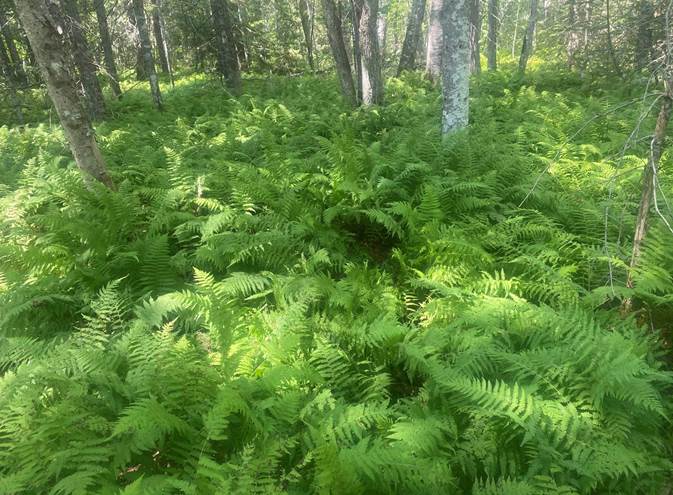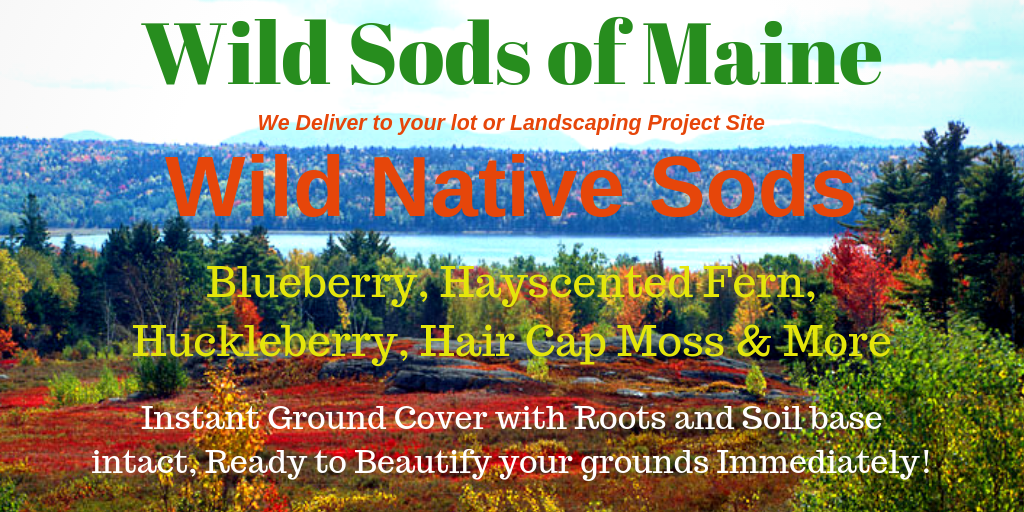New York Fern sod for Landscaping

Introduction
Native plants are changing the way we landscape today, and the New York Fern is becoming a popular choice for both garden lovers and professional landscapers. This adaptable fern species has caught everyone’s attention because it can thrive in difficult shaded areas where many other plants struggle to grow.
The New York Fern’s growing popularity comes from its two main advantages:
- It adds beauty with its delicate, tapering fronds
- It requires very little care once it’s established
You’ll see this amazing plant bringing life to woodland gardens, providing natural ground cover under trees, and enhancing the look of dimly lit corners in your outdoor space. As a native species, it plays an important role in keeping your garden’s ecosystem balanced while offering beauty throughout the year.
Choosing native plants like the New York Fern shows a move towards sustainable landscaping practices that benefit both the appearance of your garden and the local environment. When you select this fern for your landscaping projects, you’re not just creating an attractive area – you’re also supporting the health and diversity of your nearby ecosystem.
Understanding New York Fern
The New York Fern (Parathelypteris noveboracensis) is a member of the Thelypteridaceae family, which includes ferns that are known for their delicate appearance and ability to thrive in various environments. In older botanical references, you may come across this species listed under its previous scientific name, Thelypteris noveboracensis.
Physical Characteristics:
- Height: 1-2 feet tall
- Frond Shape: Distinctive triangular form
- Color: Light yellow-green to medium green
- Texture: Soft, delicate appearance
The fronds of New York Fern have a unique shape, tapering at both ends to create an elegant, lance-like silhouette. Each frond is made up of small, finely-divided leaflets (pinnae) that give the plant its characteristic feathery look. Unlike similar species, this fern has smaller pinnae at the bottom.
Growth Pattern:
- Spreads through underground rhizomes
- Forms dense colonies in favorable conditions
- Growth rate: Moderate to fast
- Deciduous nature – dies back in winter
New York Fern grows in clumps, with new fronds emerging in a circular pattern from the center of each plant. In spring, you’ll see fresh growth appearing with a light green color that gradually darkens as the season goes on. The fronds typically grow upright or slightly arching, creating a graceful layered effect in your garden or landscape.
Ideal Growth Conditions for New York Fern
New York Fern thrives in specific environmental conditions that mirror its natural woodland habitat. The key to successful growth lies in creating the right combination of soil, moisture, and light conditions.
Soil Requirements:
- Rich, well-draining soil with high organic matter content
- Loamy texture that retains moisture without becoming waterlogged
- pH range between 4.5 to 6.5, making it ideal for acidic soils
- Regular addition of leaf mold or composted materials
Moisture Needs:
- Consistent soil moisture without saturation
- Weekly watering during dry spells
- 1-2 inches of water per week
- Mulching to maintain soil dampness
Light Conditions:
- Partial to full shade
- Protection from direct afternoon sun
- Filtered light through tree canopies
- North or east-facing locations
Your New York Fern will display its best growth in woodland settings or shaded garden areas that receive dappled sunlight throughout the day. These ferns adapt well to areas beneath deciduous trees where they receive bright, indirect light in spring and additional shade during summer months.
The combination of proper drainage and regular moisture is crucial – standing water can lead to root rot, while dry conditions cause frond deterioration. A 2-3 inch layer of organic mulch helps maintain ideal soil conditions and supports the fern’s natural growth cycle.
Benefits of Using New York Fern in Landscaping Projects
New York Fern is a powerful ground cover solution for challenging shaded areas. Its spreading habit creates dense mats of foliage that naturally suppress weed growth, reducing maintenance needs in your landscape. This native fern is particularly effective at stabilizing soil on slopes and preventing erosion through its extensive root system.
Ecological Benefits of Incorporating New York Fern
The ecological benefits of incorporating New York Fern into your landscape design are substantial:
- Creates shelter for small wildlife species
- Supports native insect populations
- Contributes to soil health through natural leaf decomposition
- Helps maintain soil moisture levels
- Establishes natural corridors for beneficial organisms
Enhancing Woodland Gardens with New York Fern’s Aesthetic Appeal
New York Fern brings unique visual elements to shaded garden spaces. Its delicate fronds create a soft, feathery texture that contrasts beautifully with broader-leaved plants. The light green color brightens dark corners and adds depth to woodland gardens.
The fern’s natural growth pattern offers distinct design advantages:
- Forms graceful sweeping masses
- Creates natural transitions between different garden areas
- Provides year-round interest with changing seasonal colors
- Adds movement to the landscape as fronds respond to gentle breezes
This native fern pairs exceptionally well with other shade-loving plants:
Companion Plants for New York Fern:
- Wild Ginger
- Foam Flower
- Native Wood Asters
- Solomon’s Seal
- Woodland Phlox
The visual texture of New York Fern transforms woodland gardens into dynamic spaces. Its fine-textured fronds create a layered effect when planted in groups, adding depth and dimension to shaded areas. The fern’s natural spreading habit fills spaces between larger plants, creating a cohesive look in naturalized landscapes.
During spring, fresh green fronds emerge in a synchronized display, creating a carpet of new growth. As summer progresses, the mature fronds form an intricate tapestry of overlapping layers. This natural arrangement adds visual interest and creates a sense of movement in otherwise static garden spaces.
In naturalized landscapes, New York Fern acts as a unifying element, bridging gaps between different
Best Practices for Planting and Maintaining New York Fern in Your Landscape
Successful establishment of New York Fern starts with proper planting techniques. Plant your ferns 12-18 inches apart to allow adequate space for growth and spread. The planting hole should be twice the width of the root ball and at the same depth the fern was growing in its container.
Essential Planting Steps:
- Loosen the soil to a depth of 8-10 inches
- Mix in organic matter such as compost or leaf mold
- Place the fern at the same level it was growing previously
- Water thoroughly after planting
- Apply a 2-inch layer of mulch around the plants
Your New York Ferns need consistent moisture without becoming waterlogged. Water deeply when the top inch of soil feels dry. During the growing season, these ferns benefit from regular applications of organic mulch to retain moisture and suppress weed growth.
Seasonal Care Schedule:
- Spring: Remove dead fronds and apply fresh mulch
- Summer: Monitor soil moisture and water as needed
- Fall: Cut back dead fronds after first frost
- Winter: Add extra mulch layer for root protection
Exploring Wild Sods as an Alternative Option for Sustainable Landscaping with New York Fern
Wild sods offer a unique approach to incorporating New York Fern into your landscape design. These naturally occurring plant communities include established root systems and soil microorganisms that support healthy fern growth.
Key Benefits of Wild Sods:
- Pre-established plant communities
- Native soil microorganisms intact
- Immediate ground coverage
- Reduced establishment time
- Natural resistance to local pests
Wild sods create instant ecosystems in your garden, bringing beneficial insects, native soil bacteria, and fungi that help New York Fern thrive. You’ll find these natural communities adapting faster to your landscape compared to individually planted specimens.
The harvesting process involves carefully removing sections of naturally growing fern communities, complete with their surrounding soil and companion plants. This method preserves the delicate relationships between plants and soil organisms.
These living mats create authentic woodland environments, supporting local wildlife and maintaining natural biodiversity. Wild sods represent a sustainable choice for gardeners seeking to recreate genuine forest floor conditions.
Conclusion: Embracing Native Plants like New York Fern for a Sustainable Future in Landscaping Projects
Native plants like New York Fern represent a powerful shift toward sustainable gardening practices. These ferns bring multiple benefits beyond their delicate beauty – they strengthen local ecosystems, support wildlife habitats, and require minimal maintenance once established.
The choice to incorporate New York Fern into your landscape design reflects a deeper understanding of ecological gardening. These native ferns:
- Create natural harmony with existing woodland areas
- Reduce the need for chemical fertilizers and pesticides
- Support local pollinators and beneficial insects
- Help prevent soil erosion through their spreading root systems
- Maintain genetic diversity in your local ecosystem
Your decision to plant New York Fern contributes to a larger movement of sustainable landscaping practices. Each garden featuring native species becomes part of an interconnected network of healthy ecosystems. The subtle elegance of New York Fern paired with its ecological benefits makes it an ideal choice for forward-thinking landscape designs that prioritize both beauty and environmental responsibility.

